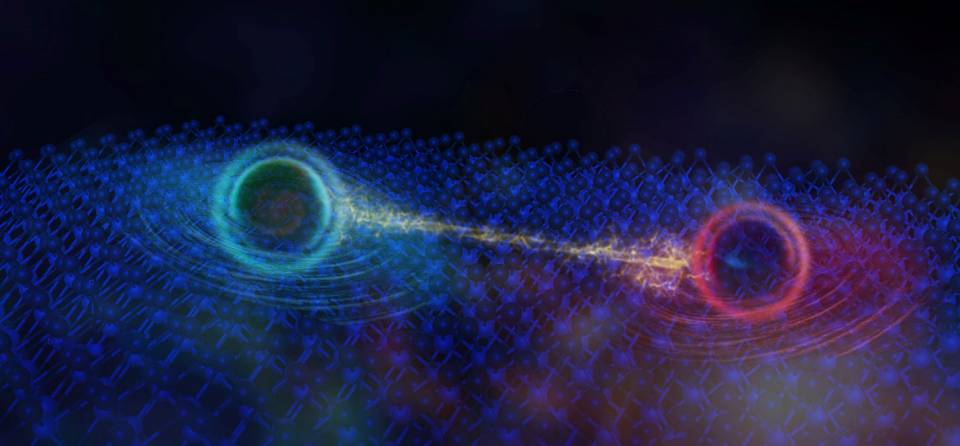A multidisciplinary research team led by Princeton physicists have observed a quantum phenomenon known as quantum oscillation in an insulator made from a material called tungsten ditelluride. This phenomenon is generally seen in metals and observing it in an insulator is completely unexpected.
Moreover, this discovery challenges a long-held distinction between metals and insulators because, in the established quantum theory of materials, insulators were not thought to be able to experience quantum oscillations.
The findings also hint at the existence of an entirely new type of quantum particle.
“If our interpretations are correct, we are seeing a fundamentally new form of quantum matter,” said Sanfeng Wu, assistant professor of physics at Princeton University and the senior author of the paper published in Nature detailing this discovery.
The team are now imagining a completely new quantum world in insulators. It is very much possible that we have completely missed this part of quantum physics for several decades.
In the current study, scientists converted the above-mentioned material tungsten ditelluride into a two-dimensional material.
Using a standard scotch tape, scientists prepared the material to “shave,” the layers down to a monolayer. Thick tungsten ditelluride behaves as a metal but a monolayer is a strong insulator.
The team then measured the resistivity of the monolayer tungsten ditelluride under magnetic fields. The measurements amazed the team: the insulator’s resistivity, despite being quite large, began to oscillate as the magnetic field was increased, indicating the shift into a quantum state.
As a result, the material which is a very strong insulator started exhibiting the most remarkable quantum property of a metal.
Researchers described this discovery as a complete surprise and they didn’t fully understand it yet.
“There are no current theories to explain this phenomenon.”
However, scientists put forward a hypothesis, a form of quantum matter that is neutrally charged.
Wu said, “Because of very strong interactions, the electrons are organizing themselves to produce this new kind of quantum matter.”
“But it is ultimately no longer the electrons that are oscillating. Instead, we believe that new particles, which we called “neutral fermions” are born out of these strongly interacting electrons and are responsible for creating this highly remarkable quantum effect.”
Pengjie Wang, a co-first author on the paper explained that these experimental results conflict with all existing theories which are based on charged fermions but these can be explained only in the presence of charge-neutral fermions.”
Scientists will now be looking further into the quantum properties of tungsten ditelluride. Precisely, they are more interested in discovering whether their hypothesis about the existence of a new quantum particle is valid or not.
Journal Reference:
Wang, P., Yu, G., Jia, Y. et al. Landau quantization and highly mobile fermions in an insulator. Nature 589, 225–229 (2021). DOI: 10.1038/s41586-020-03084-9
Press Release: Princeton University

